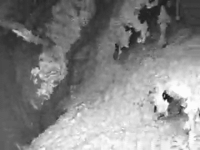
For the second issue, Junk Jet. Fanzine for Electronics and Aesthetics was looking for the Speculative, focussing on works of unpredictable architectures and volatile spaces within real and virtual environments.
The speculative haunts all systems of production, threatens them with the destruction of their order and with collapse. It continues to appear to all orthodoxies as artifice, as a black magic, which is to be unveiled, because it is somehow effective effective in an illusive, but absorbing way, which is characteristic to an occasion for a game and its stakes. It is not a rational process, but something that contradicts this frame, something that is recognized as irrational, as feverish, and that therefore is suspected to be dysfunctional, inhuman, or even monstrous.
The speculative is daring, because it is open ended, and it is spectacular, as it is highly medial. It harbours the novel.
Junk Jet contains all sorts of works: written, drawn, programmed, photographed, hacked, tinkered, cooked, and played; works that display an addiction for the speculative.
Whereas Sam Jacob observes the connection of the sacred and the technical, the moral and the functional, Gerd de Bruyn actually scripts the discussion on the function between Albert Einstein, Buckminster Fuller, and Paul Scheerbart.
Temporal or reversible, informal networks, beyond the order of power, and observed in Russia or Turkey, are the topic analysed by Peter Mörtenböck and Helge Mooshammer. Within the WWW, but also challenging temporal conventions, Olia Lialina speculates on a mysterious webcam project of an empty bed.
Reflecting on the computer as a new tool for designers, Neil Spiller and Georg Trogemann, from very different points of views, deal with machine architecture and their spaces between poetics and cybernetic automata.
Roomservices, Aram Bartholl, Annett Zinsmeister, and Dadara deal with the concurrence or clash or completion of virtual and real space.
From the photo booth, via a skip, to an ordinary building, and wiped off graffiti, there are stories and projects of the every day life and its minuscule gambles. Recetas Urbanas show an example of architectural misuse converting urban reserves to playgrounds.
Julian von Klier’s photographs show spoors of graffiti works, which are tried to be deleted. The netartists 0100101110101101.org, also working with signs, contribute with the project “An Ordinary Building”.
‘Monsters’ is called a compendium of all of the monsters found in the contemporary practice and discourse of architecture.
Maywa Denki introduces their music of nonsense objects, and Jodi’s delicious cooking recipe will make your stomach happy.
Junk Jet features the “Junkancial Times” insert: best tips to speculate.
Don’t miss the junk architect’s tattoo!!
CONTRIBUTORS
TO JUNK JET n°2 °.°
0100101110101101.org, 5Voltcore, Andrew Maynard, Annett Zinsmeister, Aram Bartholl, Baubotanik, Carsten Nicolai, Dadara, Damon Rich, Debel, Dirk Specht, Florian Cramer, Franz Liebl, Georg Trogemann, Gerburg Celestine Stoffel, Gerd de Bruyn, Hartmut Winkler, Helge Mooshammer, Jacob Reidel, Jan Vormann, Jodi, Julian von Klier, Katja Thorwarth + Kristy Balliet, Marc Gubermann, Maywa Denki, Mowblind, Neil Spiller, Olia Lialina, Palace, Paul Claessen, Peter Mörtenböck, Recetas Urbanas, Roomservices (Otto von Busch + Evren Uzer), Sam Jacob, Samuel Rhoads Clarke, m-a-u-s-e-r (Mona Mahall + Asli Serbest), Zeitguised
